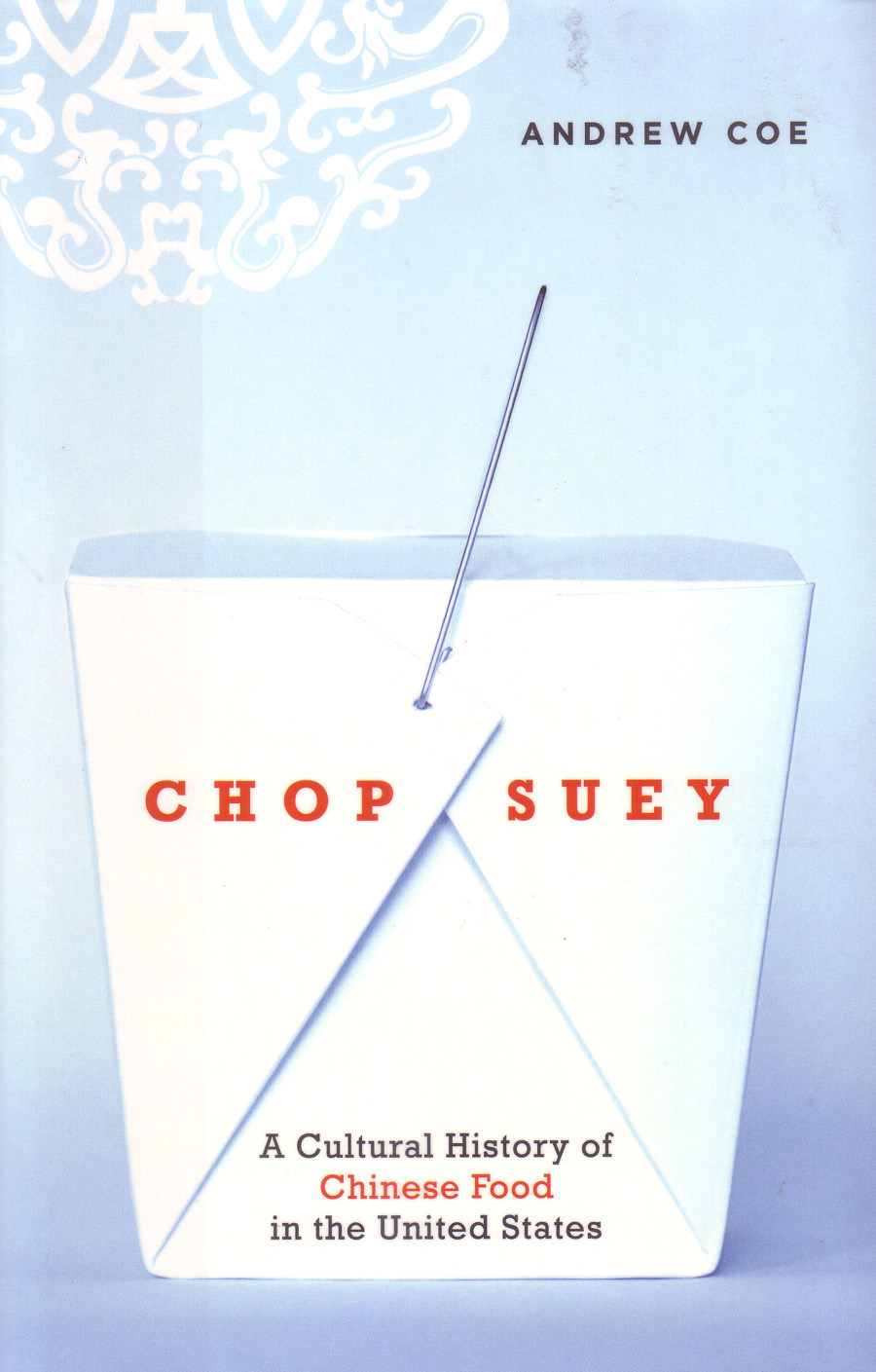|
Read 13348141 times
Connect me to:
|
Chop Suey: A Cultural History of Chinese Food in the United Statesby: Andrew Coe
New York NY:
Oxford University Press 2009, $24.95, Hardbound
ISBN: 978-0-19-533107-3
Reviewed by: Jacqueline M. Newman
Winter Volume: 2009 Issue: 16(4) page(s): 25 and 26
 This book does more than provide Chinese food history in the United States; as it should and must. The first three of its seven chapters set the stage and are outstanding. There is much information about the Chinese people and food in China. In them, among other things, learn that in 1819, Americans actually were eating indigenous Chinese food.
This book does more than provide Chinese food history in the United States; as it should and must. The first three of its seven chapters set the stage and are outstanding. There is much information about the Chinese people and food in China. In them, among other things, learn that in 1819, Americans actually were eating indigenous Chinese food.
The remaining four Chapters move to the Chinese Gold Mountain, nearer Mott Street. Learn that Chop Suey and Viceroy Li Hongzhang, who really ate only boiled chicken, rice, and vegetable soup at New York City's Waldorf Astoria, did not eat chop suey as it is often said. Nor did he eat it elsewhere in the United States in the one week he visited the USA. All too much is attributed to him, and Coe corrects and correctly advises what did not happen when he speaks of this visit. He also tells readers that in 1895, Margaret Hamm, writing for Good Housekeeping, published "some celestial recipes" including one for chop suey. Her westernized version, she said, was learned in China and is made with tomato sauce, Worcestershire sauce, and potatoes. Coe tells the truth, and that is that her and Li's tales are nothing but urban legends. We adore Ce's his first chapters, but sometimes feel less comfortable in the others. For example, when he talks about Sara Bosse and her article in Harper's Bazaar, but never mentions that her sister's pseudonym or pen-name, Onoto Watanna, is the name of a Japanese pen. Clearly he did not read about their Chinese-Japanese Cook Book, in Flavor and Fortune and elsewhere. He did not catch that one and their many other tricks. We first read about them as written by a graduate student some seventy years after this book's publication. We doubt the book was, as he says, "a perfect source for the hostess who sought to re-create a bit of Bohemia in her home." The book's pun-laden ingredient amounts and other jokes are such that many of the recipes are duds; at least the several we tried were neither workable nor were they Chinese.
We also wonder why he never advises that Wally Smith and Ilhan New, the fellows who canned bean spouts in Detroit, were an American man and his Korean friend; they started the La Choy company. He barely discusses them and the many companies that followed or swallowed up this company from Beatrice and Hunts to Con Agra. However, do not skip reading this book, What is mentioned in the rest of it can fascinate, illuminate, and explode many long-held chop suey and other Chinese culinary myths. Everyone can appreciate some of the fog Coe clears and wonder about the rest of its density. |

 This book does more than provide Chinese food history in the United States; as it should and must. The first three of its seven chapters set the stage and are outstanding. There is much information about the Chinese people and food in China. In them, among other things, learn that in 1819, Americans actually were eating indigenous Chinese food.
This book does more than provide Chinese food history in the United States; as it should and must. The first three of its seven chapters set the stage and are outstanding. There is much information about the Chinese people and food in China. In them, among other things, learn that in 1819, Americans actually were eating indigenous Chinese food.